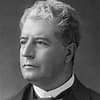
Australia’s Strategic Evolution
Mitchell Wiggins Blog
The rapid downfall of British power in the East, marked by Japan’s swift conquest of Malaya and the fall of Singapore in 1942, shattered Australia’s belief in British invincibility. This event had profound and lasting consequences, reshaping Australia’s defence and foreign policy outlook.
In response to the looming Japanese threat, Prime Minister John Curtin urgently recalled Australian troops from North Africa and appealed to both the Australian public and the United States for support. Curtin’s speech underscored the peril facing Australia and the strategic importance of the Pacific, warning, “If Australia goes, the Americas are wide open… The saving of Australia is the saving of America’s west coast.”
This strategic pivot led to the signing of the ANZUS Treaty in 1951, a collective security agreement between Australia, New Zealand, and the United States. This treaty significantly alleviated Australia’s strategic anxieties, dating back to colonial times, and allowed for the development of an independent strategic doctrine known as “Forward Defence.” This doctrine aimed to deter adversaries by creating a layered defence system that could respond before involving the United States.
Despite Australia’s significant contributions under the ANZUS framework, the nation has often been perceived merely as a “Loyal Deputy” to the United States. This perception was particularly reinforced during the Vietnam War and the Global War on Terror, causing some regional unease. However, the ANZUS Treaty and Australia’s proactive defence policies have provided stability, positioning Australia as a key player at the crossroads of the Indo-Pacific.
Australia’s journey from reliance on British power to becoming an independent strategic leader underscores its evolving role in regional and global security. The ANZUS Treaty, coupled with the Forward Defence policy, has been instrumental in this transformation, ensuring Australia’s pivotal position in the Indo-Pacific amidst shifting global dynamics.



